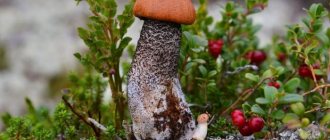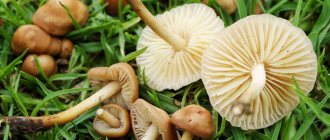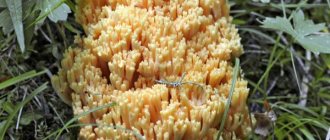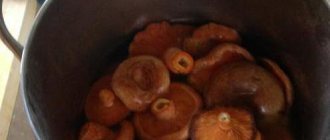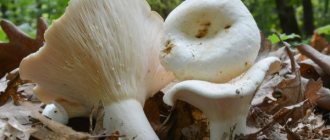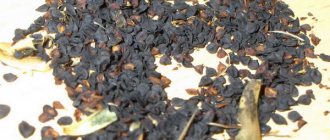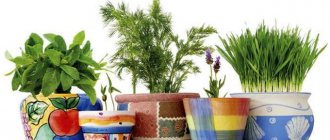Milk mushrooms: types, benefits
The breast is considered a real Russian mushroom. In Western, Eastern and Southern countries they don’t even know about them.
In our region, these mushrooms were able to firmly enter the consciousness of every person. They are considered the most wonderful forest gift, and therefore have won the hearts of our compatriots.
In many regions of Russia, for example, in Siberia, these mushrooms were one of the types of industrial mushrooms for a long period of time. Ideal nutritional properties combined with widespread fruiting are why they are in demand among people.
The main purpose of the mushroom is pickling. Other dishes must be prepared from salted preparations. But mushrooms are not suitable for frying, stewing and other similar cooking methods.
Milk milk contains so much protein that it can easily replace meat. The particular benefit of the mushroom is that it is used to create drugs that fight tuberculosis. After all, the components of the mushroom are able to neutralize the dangerous Koch bacillus. Next, we will consider in detail the types of mushrooms.
Nutritional value of milk mushrooms
100 g of raw mushroom contains:
- protein - 1.8 g;
- fats - 0.8 g;
- carbohydrates - 1.1 g;
- fiber - 1.5;
- ash - 0.4 g;
- water - 88 g.
The energy value of 100 g of mushroom is only 18.8 kcal.
Mushrooms are rich in B vitamins - thiamine (B1), riboflavin (B2), ascorbic acid (C), and contain a small concentration of nicotinic acid (vitamin PP). But in terms of mineral composition, milk mushrooms occupy the last position among other mushrooms, since they practically do not contain macro- and microelements.
White and black milk mushrooms: benefits and harms
Many people claim that mushrooms are either edible or poisonous. However, there are also conditionally edible ones. This category includes black milk mushrooms.
Professional mushroom pickers, of course, know about this. But beginners don’t know this. This type of mushroom is called conditionally edible because it contains poison.
Milk mushrooms: harm and benefit
If you just fry black milk mushrooms in a frying pan, then this poison will not disappear anywhere. As a result, you can get severely poisoned or even die.
Such mushrooms must be washed thoroughly, and then cooked for 3 hours. Only in this way will all the poison disappear.
White milk mushroom brings both harm and benefit to the human body. It all depends on how well the mushroom is prepared.
Edibility
In Europe, milk mushrooms are classified as inedible mushrooms. In our country, it is allowed to be eaten after long-term culinary processing: soaking in a saline solution, boiling to remove the bitter taste and subsequent salting. Drying, frying and using them for preparing first courses is highly not recommended. Milk mushrooms have a third category of edibility. The methods chosen for culinary processing directly depend only on the taste preferences of the housewives.
If the mushroom is old, then it is better to avoid eating it; it can be life-threatening. It is better for novice mushroom pickers to take a more experienced consultant with them to avoid unpleasant consequences.
Mushrooms are subject to variability. The same type of mushroom, which grows in different conditions (temperature and soil composition), gives different indicators in laboratory studies in terms of toxicity.
Where, in what forest do milk mushrooms grow?
There are situations when in one forest there will be a lot of mushrooms, in another there will be very few or only poisonous ones. Choosing the right forest is a huge success in finding them. If you decide to go for milk mushrooms, pay attention to our recommendations:
- The forest should be neither young nor old. After all, mushrooms have not yet appeared in a very young forest, and the old forest is very overgrown.
- Low grass should grow around each tree. As a rule, mushrooms are practically not found in tall grass.
Milk mushrooms in the forest
- Choose a forest that is very humid or try to go in the morning when dew has fallen.
- In a good area you can smell mushrooms. In the area where you want to find milk mushrooms, there is usually a mushroom smell and a moist aroma.
When to pick milk mushrooms?
If you decide to go in search of a milk mushroom, then you should consider the following: as a rule, this mushroom grows in lowlands, because they do not like dry soil. If sandy or dry soil predominates in the forest where you are going, then you don’t have to look for milk mushrooms there.
Collection of milk mushrooms
Now let's figure out exactly when it is necessary to collect these mushrooms. It all depends on their variety:
- Look for oak or aspen mushrooms at the end of July and until the end of September
- It is better to look for blue milk mushrooms closer to August and until the end of this month
- You can start collecting yellow and pepper milk mushrooms from mid-summer until the end of August
- If you want to find the black species, then head into the forest in July. They will grow there until September
Of course, the terms that we have offered you are considered only conditional. Remember that when you collect these mushrooms, make sure that the forest is sufficiently moist. Because milk mushrooms do not grow in dry soil.
In addition, take a closer look at the local vegetation. If you notice horsetail, then you will not find mushrooms in this area. This plant is considered the first sign that the soil in this forest is acidic. But milk mushrooms don’t like such soil.
Main species characteristics
- The diameter of the cap is 5-20 cm. Convex, flat, the edge is pubescent and turned inward, increased density.
- Length, dimensions, other characteristics. Leg 2-5 cm Length - 3-7 cm. It is a smooth cylinder from white to yellowish, hollow, covered with depressions and yellow spots
- Description of typical features of the skin. Slimy, moist, yellowish to milky white in color, may have slightly pronounced moist concentric zones. Soil particles are present.
- Features of the pulp. The pulp is quite fragile, dense, white in color, and smells of fresh fruit. Thick, burning juice, whitish in color. When exposed to air, it takes on the color of sulfur.
- Records. Frequent, wide, descending along the stem, but weakly.
- The color is whitish, with a yellowish tint.
- Spore powder with yellowish tint.
A conditionally edible mushroom is a mushroom that can be eaten without undesirable consequences if a number of factors are met:
- The mushroom is picked at a young age and there are no traces of the vital activity of worms and larvae.
- The mushroom has undergone proper heat or other treatment (milk mushrooms are most often soaked to remove the bitter taste).
- The type of tree or forest in which the mushrooms are collected is important. Thus, milk mushrooms and similar species can be found in birch and linden forests with normally moist soil, most often under last year’s leaf litter.
- The edibility of the mushroom is regulated by weather conditions. A mushroom grown in conditions of high humidity rots prematurely and loses its beneficial qualities for humans.
In the forests of Russia grow both edible mushrooms and those whose consumption is permitted after soaking in strong brine or prolonged cooking. The real milk mushroom is not an inedible mushroom.
Are there false milk mushrooms, poisonous, what do they look like, how to distinguish them from real ones?
Among the large assortment of edible types of mushrooms, milk mushrooms are given one of the first places. There is no mushroom picker who can bypass this mushroom, since it is distinguished by its rather bright and nutritious taste.
It’s a shame, but you can often find false squeaky mushrooms, which have a number of distinctive features. In addition, the papillary milk mushroom may end up in the basket. It can cause quite serious poisoning.
False breast
If you want to understand what exactly this mushroom looks like, you need to see a real one in person. You also need to get acquainted with the main distinguishing features and compare these features with the appearance of false mushrooms.
- The initial appearance of the cap of an edible mushroom is this: the cap is convex and has curled edges. Over time, the cap takes on a different shape. Its edges rise, creating a funnel shape in the central part.
- The cap of the edible mushroom is moist and quite dense. May have a white or cream color. As a rule, it is covered with twigs, dirt, and mucus.
- The plates of the edible mushroom are white, with yellow edges. The edges themselves are wide or quite loose. If you take a false mushroom, then it has dense, hard and thick plates that look unnatural. Often, it is thanks to the plates that one can distinguish a real milk mushroom from a poisonous one.
- Real milk mushrooms have a large amount of milky juice.
- The edible mushroom has only white flesh.
Milk mushroom is a mushroom that has a large number of false twins. But many of these mushrooms are considered conditionally edible, since according to certain characteristics they are similar to real ones.
What poisonous mushroom can be confused with milk mushroom?
The milkweed, which has a gray-pink color, is very similar to the white milk mushroom. It should not be eaten as it is considered deadly to the human body.
This mushroom has a cap up to 12 cm wide, dense, fleshy, convex or flattened in the form of a funnel. From the very beginning, the cap of the mushroom has bent edges, which eventually droop, dry out, and become covered with small scales. As the mushroom ages, its cap becomes bare, becomes red, pink or pink-brown, and after drying, blurry spots appear on the cap.
Milky
The leg of the milkweed is dense, up to 8 cm long and up to 4 cm wide. The shape is in the form of a cylinder. The flesh of the mushroom is yellow with a red tint. The bottom of the leg is colored reddish-brown. The milkweed grows from mid-summer to mid-autumn.
Varieties
There are several varieties of milk mushrooms, among them there are similar ones, so it is very important to correctly distinguish them from each other:
Real milk mushroom
The most valuable representative of this family. In different regions it has its own name - milk mushroom raw or white, pravsky or wet, white milk. The name reflects the main feature of the mushroom, by which it is easily recognized - the milky white color of the cap, which resembles marble. And also an equally remarkable feature is the fluffy fringe, which is located along the edges of the cap.
Milk mushrooms can vary in size. In some, the cap reaches 25 cm in diameter, in others it grows up to 9 cm. The mushroom stands on a small, cylindrical and smooth stalk, which is painted white or yellowish. The pulp has a fruity odor; the milky juice turns yellow when exposed to air. He prefers to settle in birch groves, less often in mixed forests. Distributed throughout Russia, appears from early June to September, in the southern regions - August-September.
Parchment and pepper breast
They are very similar to each other in appearance. Both of them belong to conditionally edible, low-grade mushrooms. They can be easily distinguished by the “behavior” of the milky juice in the air. In the parchment mushroom it does not change its color, but in the pepper mushroom it instantly turns blue. In addition, when you cut a pepper milk mushroom, you can see the same metamorphosis with its flesh; it acquires a blue-blue color.
The caps of young mushrooms are flat, slightly convex, and over time they take the shape of a “funnel.” And its white color gradually disappears and gives way to a yellow tint. They are also distinguished by the height of the stem - in the parchment mushroom it is longer (10 cm versus 6 cm) and narrowed downward.
These species appear at the same time in summer and autumn, preferring mixed forests. However, the peak collection occurs in August - September. Pepper mushroom is more often found in birch-oak groves on well-drained clay soils in the middle zone, parchment mushroom - in mixed forests and conifers.
Yellow milk mushroom
It grows in the northern regions and has a remarkable appearance. The local population also calls it a wave or a scraper. In search of it, they go to a fir forest or spruce forest; occasionally, with great luck, it is found in mixed forests. These bright yellow mushrooms with 10-centimeter caps are clearly visible under dark plant litter. However, there are also record-breaking giants whose caps grow to 28-30 cm.
The cap is covered with hairs and is very slimy. The leg is short, strong and the same color as the cap. When you press it, the flesh darkens. The milky sap reacts with air to become yellowish and smells slightly like fruit.
Canine or blue breast
This conditionally edible mushroom has not found much popularity among mushroom pickers. It is often classified as a toadstool and passed by. Perhaps due to the fact that milk mushrooms usually grow in families, but this variety prefers to grow in splendid isolation. You can find it in damp places under willows and birches. The yellow cap is covered with villi, and the milky juice turns purple or lilac when exposed to air. The mushroom lives up to its name when you press the flesh. At the point of pressure, a “bruise” appears on the white surface.
Milk mushroom is bluish
"Meteor dependent" edible mushroom. Weather conditions greatly influence its taste. The velvety white funnel cap can be seen on calcareous soils in deciduous forests. The milky sap very quickly coagulates in air and turns green. The pulp also turns green when cut and smells pleasantly with a woody-honey aroma.
Swamp milk mushroom
The marsh milk mushroom grows in groups, preferring lowlands and soils with high humidity. It is collected from the beginning of summer until the end of autumn. The reddish caps with a tubercle in the center fade over time to a yellow-brown color. The leg is long, covered with fluff. The milky sap turns yellow when exposed to air.
Red milkweed, milkweed or red milk mushroom
Unlike its “brothers,” the rubella has a dry orange-brown cap covered with cracks. The milky juice of this mushroom has a sweetish taste; when exposed to air, it quickly turns brown and becomes viscous, reminiscent of molasses. This rare species is found in coniferous or deciduous forests from July to October.
Watery zone milk mushroom
This milk mushroom has furry, curled cap edges. It grows very densely. The surface of the cap is covered with a small amount of mucus. The older the mushroom, the more funnel-shaped it takes. The pulp has a strong pleasant aroma. Milky sap quickly turns yellow in air. Quite often this type of milk mushroom is confused with white milk mushroom, although it is much larger in size than its “double”, dry milk mushroom and violin. The latter are similar in appearance, but the former does not have milky juice, and the latter lacks hairy edges.
How to distinguish a black milk mushroom from a pig?
- The pig mushroom is considered to be a lamellar mushroom. It differs from the milk mushroom in that the size of its cap is 20 cm
- The young mushroom has a convex, and over time flat, funnel-shaped, velvety, yellow-brown cap
- The flesh of the mushroom has a light brown tint, which darkens after cutting.
- The plates of the mushroom in the lower part are connected by cross veins
- These veins can be separated from the cap without any problems
pigs
- Leg length is narrow, plain, approximately 9 cm
- It is located in the center or slightly to the side
- As a rule, the mushroom is found in a variety of forests, in the form of large groups
- Breeding period is from mid-summer to mid-October
A fat pig has a larger size. Its color is dark brown, and the stem of the mushroom is velvety. In the first and second types, a large number of harmful compounds accumulate, including heavy metals.
How to distinguish a white milk mushroom from a toadstool?
The white milk mushroom does not have a thickening in the form of a tuber, which is located at the bottom of the toadstool's stem. The toadstool itself is considered a rather dangerous mushroom. Basically, its appearance resembles that of russula.
Toadstool
The grebe has a green cap, in some cases almost white. There is a ring on the stem of the mushroom near the cap. If you do not want to confuse this mushroom with white milk mushroom, remember the following rule: mushrooms that are intended for pickling have a hole on the stem. This indicates that this or that mushroom is considered edible.
How to process milk mushrooms after harvesting?
You need to know that each mushroom tends to deteriorate quickly, therefore, they need to be washed and cleaned as quickly as possible.
- To begin, wipe the mushroom with a dry piece of cloth.
- Then remove dark places from it and clean the leg from dirt.
- If the mushroom is very dirty or wormy, then it must be placed in cool, salty water.
- After soaking the mushroom, you can cook it.
Methods of use
Residents of Russia consider Podskrebysh especially valuable. Here it is fried, boiled, salted or pickled. The recipe for salted mushrooms is considered a classic one. This type of mushroom is not used for drying. Modern cooking has a huge number of methods for preparing the described mushrooms, however, the basis of such recipes is almost identical. Before salting or pickling Podgruzdi, they must be properly prepared to remove the unpleasant bitter taste.
For this:
- mushroom raw materials are cleaned, carefully sorted, washed several times in cold water;
- milk mushrooms are poured with salted water and soaked for 1-2 days.
After this, the raw materials are ready for further preparation. Instead of soaking, you can boil the mushroom mass twice. The main ingredients for pickling are salt, water and, accordingly, mushrooms. Often the recipe is supplemented with a variety of spices and herbs: currant leaves, dill, garlic, horseradish root, bay leaf, pepper, etc.
Important! It is prohibited for children under the age of 12 to consume yellow breast milk, since the child’s body is not able to digest and properly assimilate the product.
One of the most favorite delicacies is salted mushrooms fried with onions in vegetable oil. This treat is used as an addition to the main dish or as a filling in pies or pizza.
